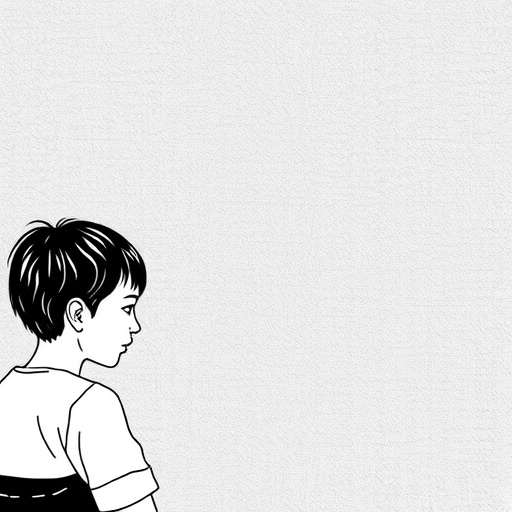In today’s rapidly evolving educational environment, the issue of bullying remains a significant concern that continues to impact the emotional and psychological well-being of students, particularly during the critical period of early adolescence. A recent study by researchers Cárcamo, Cumsille, and Gaete, published in the journal School Mental Health, leverages advanced statistical methods to explore the nuanced patterns of bullying and victimization among young adolescents. This research builds on existing literature to present a comprehensive analysis of how these experiences manifest over time and how they intersect with various socio-emotional factors.
As children progress through adolescence, they face a myriad of developmental changes, both physical and emotional. This transformative period is characterized by increased social interactions, making young adolescents particularly vulnerable to adverse experiences such as bullying. The researchers have harnessed Latent Transition Analysis (LTA), a sophisticated statistical approach that allows for the examination of changes in individuals’ experiences over time, to better understand the dynamics of bullying and victimization in this age group. This methodological choice highlights the importance of tracking the evolution of such experiences rather than relying on static data that captures only a singular observation.
The study methods involved collecting data from a diverse sample of adolescents, involving self-reported measures of both bullying behaviors and victimization experiences. By utilizing LTA, the researchers were able to categorize these behaviors into distinct latent classes. The findings illuminate the developmental trajectories that adolescents may experience, indicating that not all young people who are involved in bullying or victimization do so in the same way or at the same intensity throughout their adolescent years. This finding challenges the traditional binary perception of victims and bullies, revealing a more fluid dynamic of roles and experiences.
In addition to identifying latent classes, the study delves into the predictors that influence transitions between these classes. Psychological factors, such as levels of self-esteem and emotional regulation, were considered crucial in understanding how adolescents navigate their experiences of bullying. The research indicates that those with higher self-esteem are less likely to engage in or become victims of bullying, which underscores the importance of fostering self-worth during this critical developmental stage.
Furthermore, the researchers examined the impact of peer relationships on the bullying-victimization trajectory. The presence of supportive friendships was found to serve as a protective factor against both being a bully and being victimized. Conversely, associations with aggressive peers were linked to increased likelihoods of both engaging in bullying and experiencing victimization. These insights emphasize the element of social context in understanding adolescent behavior and the need for interventions that promote healthy peer relationships.
Understanding the transition patterns among adolescents also has implications for school policies and mental health initiatives. School environments play a critical role in either mitigating or exacerbating bullying behaviors. The findings of this study could inform policy-makers and educators on the necessity of implementing comprehensive anti-bullying programs that are sensitive to the dynamic nature of adolescent interactions. Interventions that aim to bolster self-esteem and cultivate supportive peer networks could significantly reduce instances of bullying and victimization.
Moreover, this research draws attention to the importance of proactive mental health support in schools. As adolescents navigate the complexities of social relationships, tailored mental health interventions that address the unique needs of individuals in this age group could mitigate the long-term consequences associated with bullying and victimization. Schools should consider implementing training programs that equip educators not only to identify bullying behaviors but also to foster environments that prioritize emotional well-being.
The implications of the study extend beyond immediate school environments; societal attitudes towards bullying must also evolve. There is a growing recognition that bullying is not merely a childhood issue but a societal one, requiring a collective response. Community-based initiatives that educate families and promote healthy communication can serve to create a broader culture of empathy and support, reducing the incidence of bullying and its associated mental health impacts.
As researchers continue to uncover the intricate layers of bullying and victimization through innovative methods like Latent Transition Analysis, it becomes increasingly clear that addressing these issues requires a multifaceted approach. Prevention and intervention strategies must be grounded in empirical evidence, with an emphasis on ongoing assessment and adaptation to meet the needs of changing adolescent populations.
In conclusion, Cárcamo, Cumsille, and Gaete’s research provides a vital contribution to the understanding of bullying and victimization during early adolescence. By employing advanced analytical techniques that capture the complexities of these experiences over time, the findings offer critical insights that can inform policy, intervention, and further research. As awareness of the dynamics of adolescent bullying grows, so too does the potential to foster safer and more supportive educational environments for all students.
The path forward demands collaboration among educators, parents, mental health professionals, and community members to create comprehensive strategies aimed at reducing the prevalence of bullying. As society acknowledges the vital role of emotional health in educational success, embracing evidence-based practices will be pivotal in safeguarding the well-being of future generations.
Subject of Research: Bullying and Victimization in Early Adolescence
Article Title: Latent Transition Analysis of Bullying and Victimization Experience in Early Adolescence
Article References:
Cárcamo, M., Cumsille, P. & Gaete, J. Latent Transition Analysis of Bullying and Victimization Experience in Early Adolescence.
School Mental Health (2025). https://doi.org/10.1007/s12310-025-09761-2
Image Credits: AI Generated
DOI: 10.1007/s12310-025-09761-2
Keywords: Bullying, Victimization, Adolescence, Latent Transition Analysis, Mental Health, School Environment, Peer Relationships.




